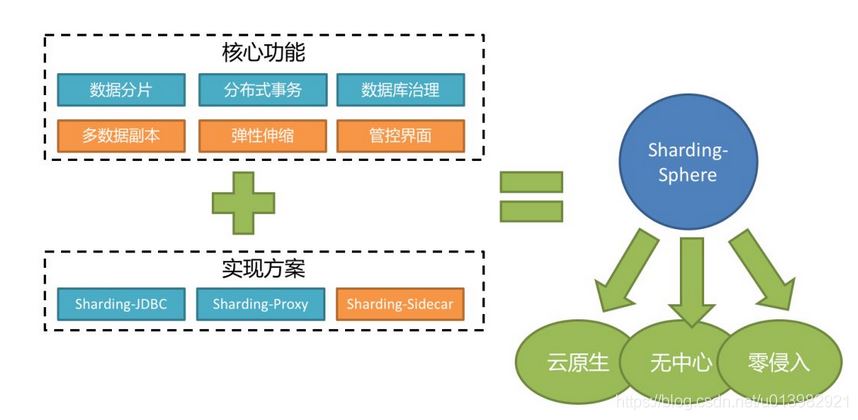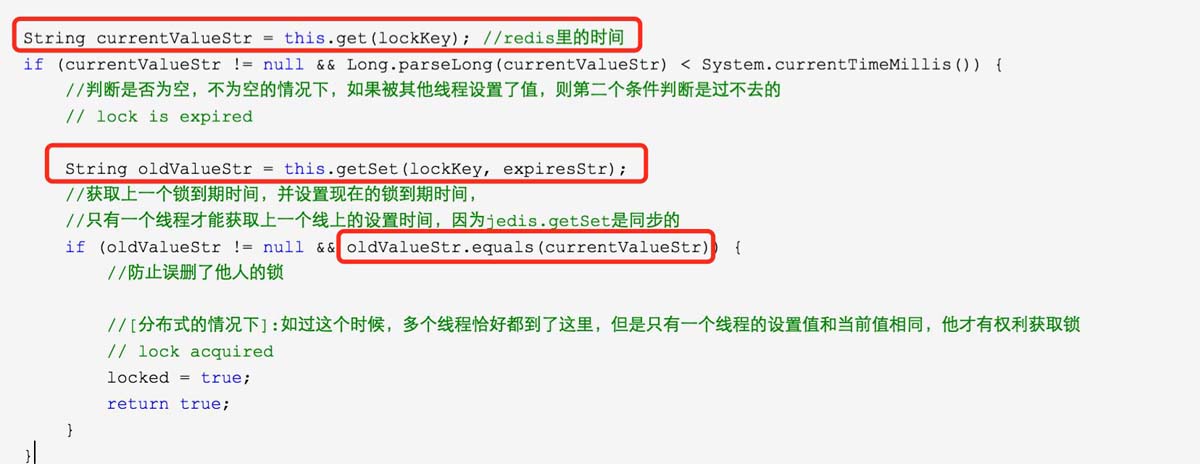前言
本文将提供一个redis的工具类,可以用在Spring boot以及Spring Cloud项目中,本工具类主要整合了将Redis作为NoSql DB使用时的常用方法,以StringRedisTemplate实例为基础,封装了读取、写入、批量写入多个Redis hash等方法,降低了Redis学习成本,使业务代码更加高效、简洁、优雅。
一.pom.xml引入所需依赖
本依赖主要用于使用HashMultimap,该hashmap是java中的HashMap增强版,可以允许键值对中的key重复,此种特性可以用于Redis批量更新hash。后文详细讲述。
<dependency>
<groupId>com.google.guava</groupId>
<artifactId>guava</artifactId>
<version>30.0-jre</version>
</dependency>二.RedisUtils工具类
直接上源码,CV工程师必备,新建个Class,将其命名为RedisUtils ,后将首行包名修改下即可使用。
package com.xxx.utils;
import com.google.common.collect.HashMultimap;
import org.springframework.dao.DataAccessException;
import org.springframework.data.redis.connection.RedisConnection;
import org.springframework.data.redis.core.*;
import java.util.*;
import java.util.concurrent.TimeUnit;
/**
* @description: Redis工具类(String类型)
* @author: 大脑补丁
* @create: 2022-06-23 16:02
*/
public class RedisUtils {
private StringRedisTemplate redisTemplate;
public RedisUtils(StringRedisTemplate redisTemplate) {
this.redisTemplate = redisTemplate;
}
/**
* 写入缓存
*
* @param key redis键
* @param value redis值
* @return 是否成功
*/
public boolean set(final String key, String value) {
boolean result = false;
try {
ValueOperations<String, String> operations = redisTemplate.opsForValue();
operations.set(key, value);
result = true;
} catch (Exception e) {
e.printStackTrace();
}
return result;
}
/**
* 写入缓存设置时效时间
*
* @param key redis键
* @param value redis值
* @return 是否成功
*/
public boolean set(final String key, String value, Long expireTime) {
boolean result = false;
try {
ValueOperations<String, String> operations = redisTemplate.opsForValue();
operations.set(key, value);
redisTemplate.expire(key, expireTime, TimeUnit.SECONDS);
result = true;
} catch (Exception e) {
e.printStackTrace();
}
return result;
}
/**
* 批量删除对应的键值对
*
* @param keys Redis键名数组
*/
public void removeByKeys(final String... keys) {
for (String key : keys) {
remove(key);
}
}
/**
* 批量删除Redis key
*
* @param pattern 键名包含字符串(如:myKey*)
*/
public void removePattern(final String pattern) {
Set<String> keys = redisTemplate.keys(pattern);
if (keys != null && keys.size() > 0)
redisTemplate.delete(keys);
}
/**
* 删除key,也删除对应的value
*
* @param key Redis键名
*/
public void remove(final String key) {
if (exists(key)) {
redisTemplate.delete(key);
}
}
/**
* 判断缓存中是否有对应的value
*
* @param key Redis键名
* @return 是否存在
*/
public Boolean exists(final String key) {
return redisTemplate.hasKey(key);
}
/**
* 读取缓存
*
* @param key Redis键名
* @return 是否存在
*/
public String get(final String key) {
String result = null;
ValueOperations<String, String> operations = redisTemplate.opsForValue();
result = operations.get(key);
return result;
}
/**
* 哈希 添加
*
* @param key Redis键
* @param hashKey 哈希键
* @param value 哈希值
*/
public void hmSet(String key, String hashKey, String value) {
HashOperations<String, String, String> hash = redisTemplate.opsForHash();
hash.put(key, hashKey, value);
}
/**
* 哈希获取数据
*
* @param key Redis键
* @param hashKey 哈希键
* @return 哈希值
*/
public String hmGet(String key, String hashKey) {
HashOperations<String, String, String> hash = redisTemplate.opsForHash();
return hash.get(key, hashKey);
}
/**
* 判断hash是否存在键
*
* @param key Redis键
* @param hashKey 哈希键
* @return 是否存在
*/
public boolean hmHasKey(String key, String hashKey) {
HashOperations<String, String, String> hash = redisTemplate.opsForHash();
return hash.hasKey(key, hashKey);
}
/**
* 删除hash中一条或多条数据
*
* @param key Redis键
* @param hashKeys 哈希键名数组
* @return 删除数量
*/
public long hmRemove(String key, String... hashKeys) {
HashOperations<String, String, String> hash = redisTemplate.opsForHash();
return hash.delete(key, hashKeys);
}
/**
* 获取所有哈希键值对
*
* @param key Redis键名
* @return 哈希Map
*/
public Map<String, String> hashMapGet(String key) {
HashOperations<String, String, String> hash = redisTemplate.opsForHash();
return hash.entries(key);
}
/**
* 保存Map到哈希
*
* @param key Redis键名
* @param map 哈希Map
*/
public void hashMapSet(String key, Map<String, String> map) {
HashOperations<String, String, String> hash = redisTemplate.opsForHash();
hash.putAll(key, map);
}
/**
* 列表-追加值
*
* @param key Redis键名
* @param value 列表值
*/
public void lPush(String key, String value) {
ListOperations<String, String> list = redisTemplate.opsForList();
list.rightPush(key, value);
}
/**
* 列表-获取指定范围数据
*
* @param key Redis键名
* @param start 开始行号
* @param end 结束行号
* @return 列表
*/
public List<String> lRange(String key, long start, long end) {
ListOperations<String, String> list = redisTemplate.opsForList();
return list.range(key, start, end);
}
/**
* 集合添加
*
* @param key Redis键名
* @param value 值
*/
public void add(String key, String value) {
SetOperations<String, String> set = redisTemplate.opsForSet();
set.add(key, value);
}
/**
* 集合获取
*
* @param key Redis键名
* @return 集合
*/
public Set<String> setMembers(String key) {
SetOperations<String, String> set = redisTemplate.opsForSet();
return set.members(key);
}
/**
* 有序集合添加
*
* @param key Redis键名
* @param value 值
* @param score 排序号
*/
public void zAdd(String key, String value, double score) {
ZSetOperations<String, String> zSet = redisTemplate.opsForZSet();
zSet.add(key, value, score);
}
/**
* 有序集合-获取指定范围
*
* @param key Redis键
* @param startScore 开始序号
* @param endScore 结束序号
* @return 集合
*/
public Set<String> rangeByScore(String key, double startScore, double endScore) {
ZSetOperations<String, String> zset = redisTemplate.opsForZSet();
return zset.rangeByScore(key, startScore, endScore);
}
/**
* 模糊查询Redis键名
*
* @param pattern 键名包含字符串(如:myKey*)
* @return 集合
*/
public Set<String> keys(String pattern) {
return redisTemplate.keys(pattern);
}
/**
* 获取多个hashMap
*
* @param keySet
* @return List<Map < String, String>> hashMap列表
*/
public List hashMapList(Collection<String> keySet) {
return redisTemplate.executePipelined(new SessionCallback<String>() {
@Override
public <K, V> String execute(RedisOperations<K, V> operations) throws DataAccessException {
HashOperations hashOperations = operations.opsForHash();
for (String key : keySet) {
hashOperations.entries(key);
}
return null;
}
});
}
/**
* 保存多个哈希表(HashMap)(Redis键名可重复)
*
* @param batchMap Map<Redis键名,Map<键,值>>
*/
public void batchHashMapSet(HashMultimap<String, Map<String, String>> batchMap) {
// 设置5秒超时时间
redisTemplate.expire("max", 25, TimeUnit.SECONDS);
redisTemplate.executePipelined(new RedisCallback<List<Map<String, String>>>() {
@Override
public List<Map<String, String>> doInRedis(RedisConnection connection) throws DataAccessException {
Iterator<Map.Entry<String, Map<String, String>>> iterator = batchMap.entries().iterator();
while (iterator.hasNext()) {
Map.Entry<String, Map<String, String>> hash = iterator.next();
// 哈希名,即表名
byte[] hashName = redisTemplate.getStringSerializer().serialize(hash.getKey());
Map<String, String> hashValues = hash.getValue();
Iterator<Map.Entry<String, String>> it = hashValues.entrySet().iterator();
// 将元素序列化后缓存,即表的多条哈希记录
Map<byte[], byte[]> hashes = new HashMap<byte[], byte[]>();
while (it.hasNext()) {
// hash中一条key-value记录
Map.Entry<String, String> entry = it.next();
byte[] key = redisTemplate.getStringSerializer().serialize(entry.getKey());
byte[] value = redisTemplate.getStringSerializer().serialize(entry.getValue());
hashes.put(key, value);
}
// 批量保存
connection.hMSet(hashName, hashes);
}
return null;
}
});
}
/**
* 保存多个哈希表(HashMap)(Redis键名不可以重复)
*
* @param dataMap Map<Redis键名,Map<哈希键,哈希值>>
*/
public void batchHashMapSet(Map<String, Map<String, String>> dataMap) {
// 设置5秒超时时间
redisTemplate.expire("max", 25, TimeUnit.SECONDS);
redisTemplate.executePipelined(new RedisCallback<List<Map<String, String>>>() {
@Override
public List<Map<String, String>> doInRedis(RedisConnection connection) throws DataAccessException {
Iterator<Map.Entry<String, Map<String, String>>> iterator = dataMap.entrySet().iterator();
while (iterator.hasNext()) {
Map.Entry<String, Map<String, String>> hash = iterator.next();
// 哈希名,即表名
byte[] hashName = redisTemplate.getStringSerializer().serialize(hash.getKey());
Map<String, String> hashValues = hash.getValue();
Iterator<Map.Entry<String, String>> it = hashValues.entrySet().iterator();
// 将元素序列化后缓存,即表的多条哈希记录
Map<byte[], byte[]> hashes = new HashMap<byte[], byte[]>();
while (it.hasNext()) {
// hash中一条key-value记录
Map.Entry<String, String> entry = it.next();
byte[] key = redisTemplate.getStringSerializer().serialize(entry.getKey());
byte[] value = redisTemplate.getStringSerializer().serialize(entry.getValue());
hashes.put(key, value);
}
// 批量保存
connection.hMSet(hashName, hashes);
}
return null;
}
});
}
/**
* 保存多个哈希表(HashMap)列表(哈希map的Redis键名不能重复)
*
* @param list Map<Redis键名,Map<哈希键,哈希值>>
* @see RedisUtils*.batchHashMapSet()*
*/
public void batchHashMapListSet(List<Map<String, Map<String, String>>> list) {
// 设置5秒超时时间
redisTemplate.expire("max", 25, TimeUnit.SECONDS);
redisTemplate.executePipelined(new RedisCallback<List<Map<String, String>>>() {
@Override
public List<Map<String, String>> doInRedis(RedisConnection connection) throws DataAccessException {
for (Map<String, Map<String, String>> dataMap : list) {
Iterator<Map.Entry<String, Map<String, String>>> iterator = dataMap.entrySet().iterator();
while (iterator.hasNext()) {
Map.Entry<String, Map<String, String>> hash = iterator.next();
// 哈希名,即表名
byte[] hashName = redisTemplate.getStringSerializer().serialize(hash.getKey());
Map<String, String> hashValues = hash.getValue();
Iterator<Map.Entry<String, String>> it = hashValues.entrySet().iterator();
// 将元素序列化后缓存,即表的多条哈希记录
Map<byte[], byte[]> hashes = new HashMap<byte[], byte[]>();
while (it.hasNext()) {
// hash中一条key-value记录
Map.Entry<String, String> entry = it.next();
byte[] key = redisTemplate.getStringSerializer().serialize(entry.getKey());
byte[] value = redisTemplate.getStringSerializer().serialize(entry.getValue());
hashes.put(key, value);
}
// 批量保存
connection.hMSet(hashName, hashes);
}
}
return null;
}
});
}
}三.如何使用工具类
// 1.注入StringRedisTemplate @Autowired private StringRedisTemplate stringRedisTemplate // 2.new一个工具类对象 RedisUtils redisUtils = new RedisUtils(stringRedisTemplate); // 3.开心的调用工具类任意方法 Map<String, String> map = redisUtils.hashMapGet(redisKey);
四.工具类中批量更新Redis Hash详解
工具类中batchHashMapSet()重载的方法有两个,特别的是,其中一个方法是支持key值重复的,也就说可以同时更新或写入Redis 键名相同的两个hash,后写入的hash会把先写入的数据覆盖,适合一些实时往Redis同步数据的业务场景。
使用方法:
HashMultimap<String, Map<String, String>> batchMap = HashMultimap.create(); redisUtils.batchHashMapSet(batchMap);
总结
本文提供了支持RedisUtils工具类,可以满足大多数场景把Redis作为NoSQL DB来使用的操作。
到此这篇关于Java中RedisUtils工具类的使用的文章就介绍到这了,更多相关Java RedisUtils工具类内容请搜索好代码网以前的文章或继续浏览下面的相关文章希望大家以后多多支持好代码网!





